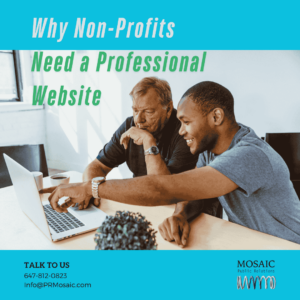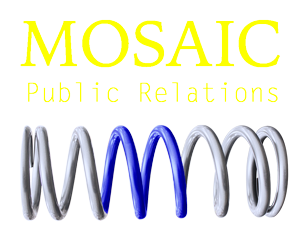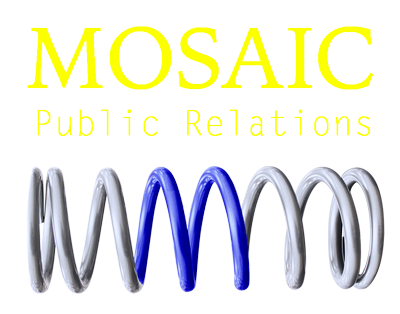Why Non-Profits Need a Professional Website
The Importance of Visibility in a Digital World
In our increasingly digital landscape, where information is just a click away, visibility has become a cornerstone of organizational success, particularly for non-profits. Today’s potential donors, volunteers, and beneficiaries often turn to the Internet as their primary source of information. This means that having a well-designed website is no longer optional—it’s essential. With the right online presence, a non-profit can significantly boost its reach and impact.
Search engines are the modern-day gatekeepers of information. If your organization cannot be found on platforms like Google, it essentially becomes invisible. An effective website, equipped with proper Search Engine Optimization (SEO) techniques, can improve your rankings and ensure that you appear in relevant searches. As highlighted by Moz’s Beginner’s Guide to SEO, a structured approach to SEO can dramatically enhance a non-profit’s ability to reach its audience. Implementing keywords that resonate with your mission and values can allow your organization to connect with individuals looking for causes to support.
Social media channels also play a vital role in boosting visibility. Platforms such as Facebook, Twitter, and Instagram can serve as extensions of your website, driving traffic back to your main site. Utilizing these channels for engagement opens up another layer of visibility. Regular posts, event promotions, and stories about your mission all contribute to building a community around your cause. According to HubSpot’s Social Media Marketing Guide, effectively leveraging social media can increase your audience size and create a loyal following.
Moreover, accessibility cannot be overlooked. In a world where many users access the web from mobile devices, it is essential that your website is mobile-friendly. A responsive design ensures that your content is easy to digest on any screen size. As reported by Statista, mobile devices accounted for over 50% of global web traffic in recent years. Therefore, if your website is not optimized for mobile viewing, you’re missing out on a significant portion of potential users and supporters.
No less important is the load speed of your website. Studies show that users are more likely to abandon a site if it takes more than three seconds to load. This is particularly critical for non-profits that hope to garner quick interest and support. Tools such as Google PageSpeed Insights can help you gauge your website’s performance and provide actionable insights to enhance speed and performance. An efficient site not only improves user experience but also boosts your search engine rankings.
In essence, the importance of visibility in our digital world cannot be overstated for non-profits. It’s about reaching the right people at the right time with the right message. Engaging visuals combined with strategic SEO practices and social media outreach can amplify your presence, guiding users to support your cause.
PR Mosaic is equipped to help you enhance your online presence, from website development to SEO optimization. If you’re looking to build a new website or improve your existing online strategy, don’t hesitate to reach out to discuss your future projects with PR Mosaic. Together, we can navigate the ever-evolving digital landscape.

Building Trust and Credibility Through Design
The visual elements of a website play a pivotal role in establishing trust and credibility for non-profit organizations. Users are often quick to judge the legitimacy of a site based on its design; research has shown that it takes less than a second for someone to form an opinion about a website. If your site appears outdated or poorly designed, it can lead potential donors, volunteers, and beneficiaries to question your organization’s professionalism and mission. A striking design, on the other hand, conveys competence and reliability, crucial traits that users seek when deciding to engage with a non-profit.
When creating a professional website, prioritizing user experience is essential. This means not only having an aesthetic layout but also ensuring intuitive navigation. If users can’t easily find information on your site, they may leave before fully exploring what you have to offer. A simple, clean navigation structure can enhance the browsing experience, allowing users to efficiently locate details about your mission, programs, and opportunities to get involved. Consider implementing a user-friendly UI design that utilizes a logical flow to guide visitors toward key resources.
Additionally, the choice of colors and imagery can be highly impactful. Colors evoke emotions and establish associations; for instance, blue often conveys a sense of security and trust, while green is linked to health and growth. Pairing colors strategically can strengthen your brand’s identity and resonate with your audience’s values. Using high-quality images is equally important, as visuals can illustrate the stories of those you serve, making your mission more relatable and compelling. Stock photos can come off as generic, so whenever possible, use authentic imagery that showcases real people and events associated with your organization.
Another critical aspect of building trust through design is transparency. Including elements like financial transparency reports or testimonials from beneficiaries can be powerful. By openly sharing information about where donations go and the impact they have, you foster a sense of integrity and honesty. Consider integrating an easily accessible section that details your financials or showcases positive stories from those who have benefited from your work. This transparency can significantly enhance your credibility in the eyes of potential supporters.
Moreover, a well-designed website must incorporate trust signals. Incorporating security badges, certificate logos, and clear contact information can increase visitor confidence in your organization. Today’s audience is savvy and aware of online dangers; showing that you take security seriously can set your non-profit apart. Furthermore, including links to your social media pages can provide visitors with various platforms to verify your organization and see ongoing activities, enhancing trust even further.
Finally, consider the power of storytelling in your design. Crafting a narrative about your non-profit’s journey can foster emotional connections with your audience. Integrating compelling stories through engaging layouts or interactive features can breathe life into your mission, making it memorable and relatable. Use a combination of text, visuals, and even video to bring your organization’s work to life.
Ultimately, investing in a professional website is not merely about having a digital presence; it’s about creating an environment where trust and credibility are at the forefront. An effectively designed website can enhance your non-profit’s reputation and subsequently drive engagement and donations. By incorporating user-friendly navigation, strategic visuals, transparency, trust signals, and storytelling, your website can become a powerful tool for building lasting relationships with supporters.
If you’re looking to build or enhance your website, SEO, or overall online presence, PR Mosaic stands ready to assist you. Our expertise can help you navigate the complexities of the digital landscape. Reach out today to discuss your future projects, and let us help you achieve your goals.
Engaging Your Audience with Compelling Content
Creating compelling content is one of the cornerstones of engaging your audience effectively. For non-profits, this means going beyond just laying out facts and figures; it involves telling stories that resonate deeply with potential supporters. Content should reflect not only what the organization does but also who it serves and the impact it makes in the community. By conveying powerful narratives and using a conversational tone, the audience can connect on an emotional level, which is crucial for inspiring action.
To start with, storytelling should be at the heart of your content strategy. Each story offers a chance to illustrate the mission of your non-profit and demonstrate its impact. Highlight the individual stories of beneficiaries—real people whose lives have changed because of your organization’s efforts. Use vivid imagery and detailed accounts to paint a picture that engages your readers. Consider using a story format that builds tension and resolution, drawing the audience into the challenges faced and the solutions provided by your organization.
Incorporating multimedia elements can further enhance your content. Text alone may not always capture attention; by integrating photos, infographics, or videos, you create a richer experience. For instance, a short video featuring testimonials from those who have benefitted from your services can significantly boost engagement. According to research from Wyzowl, 86% of consumers would like to see more video content from brands they support. Utilizing video storytelling can effectively communicate your mission in an engaging way that encourages sharing and increases visibility.
Moreover, content should encourage audience interaction. Integrate calls-to-action (CTAs) strategically throughout your content. Whether it’s signing a petition, volunteering, or making a donation, CTAs help guide visitors toward taking concrete steps in support of your mission. When crafting these CTA messages, use action-oriented language that invokes urgency, such as “Join us in making a change” or “Become a part of our mission today!” These phrases can motivate visitors to take the next step and get involved.
It’s critical to tailor your content for different platforms and audiences. For your website, long-form articles can provide in-depth insights into your projects, while social media posts may need to be shorter, more engaging snippets that spark immediate interest. Adapting your messaging ensures that your audience remains engaged, no matter where they encounter your content. A straightforward tip is to create platform-specific content calendars that recognize peak engagement times and audience preferences for format and length.
Utilizing data-driven insights can also inform what kind of content resonates best with your audience. Tools like Google Analytics can provide valuable information about which pages are most frequented, where users are dropping off, and what types of content lead to conversions. By reviewing user behavior, you can adjust your content strategy accordingly to ensure it meets your audience’s needs and expectations. Analytics can guide you in creating targeted campaigns or social media posts that tap into trending topics or interests within your community.
Furthermore, including user-generated content can foster a sense of community among your supporters. Encourage volunteers, beneficiaries, and donors to share their own stories related to your mission. This not only provides authentic content but also strengthens relationships with your audience by making them feel valued and heard. You might create a dedicated section on your website to showcase these stories or encourage sharing on social media, amplifying grassroots engagement.
Ultimately, engaging your audience with compelling content involves a thoughtful strategy that prioritizes storytelling, multimedia integration, interaction, platform adaptation, data insights, and community involvement. By creating a dynamic content experience, you can galvanize support for your non-profit while informing and inspiring your audience to take action in your favor.
If you’re looking for expert assistance in creating and optimizing content for your website or other online platforms, PR Mosaic is here to help. From compelling storytelling to strategic content planning, our team can guide you in elevating your online presence. Reach out today to discuss your future projects, and let’s work together to amplify your non-profit’s mission.



